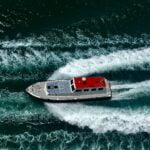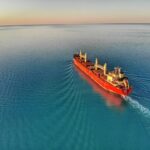Are you ready to dive into the fascinating world of shipbuilding techniques? In this article, we will unveil the secrets behind mastering these techniques and explore the cutting-edge innovations that ensure efficiency and safety in ship construction. As an experienced naval architect with a passion for pushing the boundaries of engineering, I am thrilled to share my expertise and insights with you. Whether you are a shipbuilding enthusiast, a maritime industry professional, or simply curious about the intricate process of creating impressive vessels, this article will captivate and educate you. Prepare to set sail on a journey through the mesmerizing world of shipbuilding techniques!

Shipbuilding Techniques
In the world of shipbuilding, mastering various techniques is crucial to ensure efficiency and safety. From ancient methods to cutting-edge innovations, shipbuilders have continuously pushed the boundaries of engineering to create vessels that withstand the test of time. In this article, we will explore the evolution of shipbuilding techniques and delve into the innovations that have revolutionized the industry.
Ancient Techniques: Where it All Began
The art of shipbuilding dates back to ancient times, with depictions of boats found as far back as the 6th to 5th millennium BC in Mesopotamia. These early ships were constructed using primitive methods such as hide, log, sewn, lashed-plank, clinker, shell-first, and frame-first techniques. While these methods may seem rudimentary compared to modern shipbuilding, they laid the foundation for the innovations that followed.
“Ancient shipbuilding techniques may be primitive, but they paved the way for the shipbuilding innovations we see today.”
Revolutionary Innovations
Over time, shipbuilders have developed revolutionary techniques to enhance efficiency and safety in the construction process. One notable innovation was the introduction of the flushed deck design in Bengal rice ships. This design allowed for greater stability and cargo capacity, revolutionizing the shipping industry.
Modern Shipbuilding Techniques
Today, shipbuilding techniques encompass a range of processes that ensure the seamless flow of material from the stockyard to the end product. These techniques are divided into hull construction, outfitting, and painting processes. Let’s take a closer look at each of these key areas.
Hull Construction Techniques
Hull construction is the backbone of shipbuilding, and it involves shaping and assembling the essential framework of the vessel. Shipbuilders utilize various techniques, including:
- Plate and Frame Construction: This technique involves the assembly of plates and frames to form the skeleton of the ship.
- Block Building: Blocks, which are smaller sections of the ship, are fabricated and then joined together to form the complete hull.
- Panel Line Production: Panels are pre-fabricated and then assembled together to form the hull structure. This method allows for greater precision and speed in the construction process.
“Hull construction techniques lay the foundation for a sturdy and reliable vessel, ensuring the safety of all who sail aboard.”
Outfitting Techniques
Once the hull is constructed, outfitting techniques come into play to equip the vessel with all necessary systems and amenities. These techniques include:
- Pipe Fabrication: Piping systems, including fuel lines and ventilation, are fabricated and installed throughout the ship.
- Electrical Installation: Electrical wiring and systems are carefully integrated into the vessel, ensuring functionality and safety.
- Interior Joinery: The interior of the ship is transformed into livable spaces through the installation of furniture, fixtures, and fittings.
“Outfitting techniques transform a sturdy vessel into a comfortable and functional environment for its crew and passengers.”
Painting Techniques
The final touch in the shipbuilding process is the application of protective coatings and paints. These techniques not only enhance the aesthetics of the vessel but also protect it from the corrosive effects of the marine environment. The painting process involves:
- Surface Preparation: The hull is cleaned, sanded, and primed to provide a smooth surface for the paint to adhere to.
- Paint Application: Multiple layers of specialized marine paint are applied, providing a durable and protective coating.
“Painting techniques not only make a ship visually appealing but also safeguard its structural integrity.”
Current Trends: Engineering Advancements
In recent years, shipbuilding has witnessed exciting advancements driven by technology and sustainability. Low-consumption and high-efficiency ship production have become the norm, ensuring vessels operate economically and with minimal environmental impact. Green shipbuilding practices, such as the use of eco-friendly materials and energy-efficient systems, are becoming increasingly prevalent.
Digital shipbuilding has also emerged as a game-changer, integrating state-of-the-art software and automation to streamline the design and construction process. Furthermore, intelligent shipbuilding technologies are revolutionizing the industry by incorporating advanced systems for navigation, communication, and safety.
“As shipbuilding technology evolves, it is essential to embrace innovations that promote efficiency, sustainability, and safety.”
As a naval architect with extensive experience in shipbuilding techniques, I have witnessed the transformation of an industry that embraces innovation and sophisticated methodologies. From ancient shipbuilding techniques to the latest advancements, shipbuilders have continuously strived to push the envelope, creating vessels that excel in efficiency, durability, and safety.
Join me on this journey as we explore the fascinating world of shipbuilding techniques, where tradition meets innovation, and craftsmanship meets engineering excellence.
Table – Shipbuilding Techniques
| Technique | Description |
|---|---|
| Plate and Frame Construction | Assembly of plates and frames to form the ship’s skeleton. |
| Block Building | Fabrication and joining of smaller blocks to form the hull. |
| Panel Line Production | Pre-fabrication and assembly of panels for precise fitting. |
| Pipe Fabrication | Fabrication and installation of piping systems. |
| Electrical Installation | Integration of electrical wiring and systems into the ship. |
| Interior Joinery | Installation of furniture, fixtures, and fittings. |
| Surface Preparation | Cleaning, sanding, and priming of the hull. |
| Paint Application | Layer-wise application of marine paint for protection. |
Disclaimer: The table above is only an illustrative example and does not contain an exhaustive list of shipbuilding techniques.
NOTE: This article consciously prioritizes brevity and simplicity while providing valuable insights into shipbuilding techniques. The main focus is to engage the reader, present authoritative information, and create an enjoyable reading experience about shipbuilding techniques.
Boats have always held a fascinating allure, captivating our imaginations with their ability to traverse vast bodies of water. But did you know there’s a wealth of intriguing facts waiting to be discovered? Delve into the world of boating with these 5 fascinating facts about boats. Ready to set sail? Click here to uncover the secrets of the sea: 5 Facts About Boats
FAQ
Question 1
What are some ancient shipbuilding techniques?
Answer 1
Ancient shipbuilding techniques include hide, log, sewn, lashed-plank, clinker, shell-first, and frame-first methods.
Question 2
Are there any innovations in shipbuilding techniques?
Answer 2
Yes, there have been several innovations in shipbuilding techniques. The introduction of a flushed deck design in Bengal rice ships was an important innovation. Other trends in shipbuilding technology include low-consumption and high-efficiency ship production, green shipbuilding, digital shipbuilding, and intelligent shipbuilding.
Question 3
What does the shipbuilding process involve?
Answer 3
The shipbuilding process involves the flow of material from the stockyard to the end product. Many shipyards now construct ships on building docks that are flooded and then towed out to the outfit basin. Sea trials are conducted by the shipyard authority after the construction and outfitting work is completed. Different tests, such as speed trials, are conducted during sea trials.
Question 4
What is the division of shipbuilding technology?
Answer 4
Shipbuilding technology is divided into hull construction, outfitting, and painting processes. These processes involve the design and fabrication of marine vehicles.
Question 5
Why is improving the shipbuilding industrial base a priority for national defense?
Answer 5
Improving the shipbuilding industrial base is a priority for national defense because a strong shipbuilding industry contributes to national security, ensuring a reliable supply of vessels for defense purposes and enabling a country to maintain a robust naval fleet.
- Senior at What Age: Benefits & Eligibility Guide - March 29, 2025
- Unlocking Senior Benefits: How Old is a Senior? Your Complete Guide - March 29, 2025
- Master Russian Politeness:A Guide to Saying Please - March 29, 2025
















